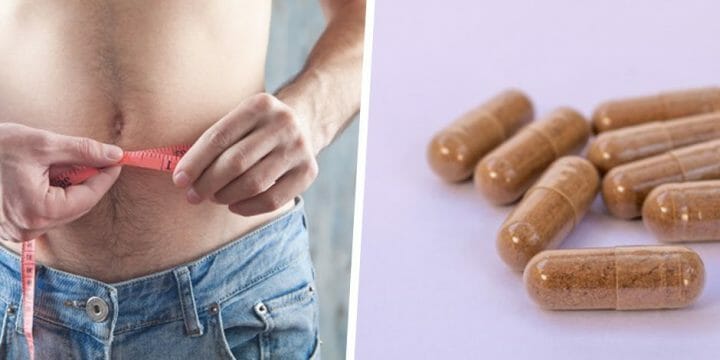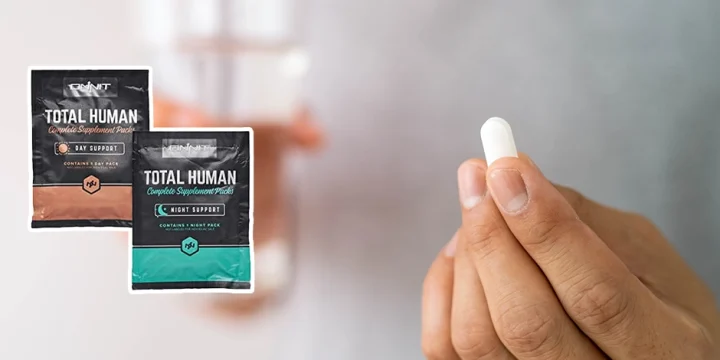I’ve helped countless clients lose weight during the decade I’ve been a fitness trainer, and one of the most common concerns my clients have is whether they’ll get stretch marks if they lose some pounds.
I talked with a dermatologist friend and my clients who had lost weight to get their perspective.
Here’s what you should know about stretch marks and weight loss.
Quick Summary
- Stretch marks are more likely to occur during rapid weight gain than weight loss, and their visibility often becomes apparent after losing weight.
- Preventative measures like maintaining hydration, balanced nutrition, and gradual weight loss can help minimize the risk of developing stretch marks.
- A study in the Journal of the European Academy of Dermatology and Venereology suggests that topical treatments like creams and oils can be effective for new and older stretch marks.
- From my professional experience, understanding the role of genetics and nutrition in skin health is key to effectively managing and preventing stretch marks.
Stretch Marks After Weight Loss
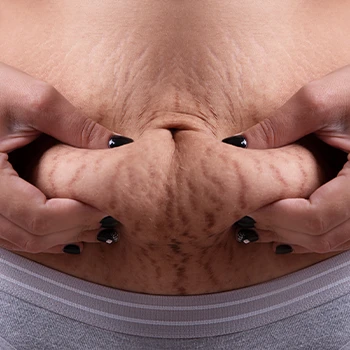
Stretch marks typically occur when there’s a rapid weight gain.
Your skin stretches, which causes tears in the skin’s inner layer. This happens because collagen and elastin are damaged.
Most stretch marks are actually created not when you lose weight but when you gain weight. However, they are usually visible once you lose fat.
The appearance of stretch marks after losing weight can differ.
When they are fresh, stretch marks look red, pink, or even purple-blue, and the skin looks thin and elevated. But, over time, they thin and become pale.
From my experience, clients who lose weight gradually tend to have fewer stretch marks. One of my clients, who lost weight at a steady pace of one percent of his body weight per week, maintained muscle mass but also significantly reduced the appearance of stretch marks.
Role of Genetics in Stretch Mark Development
Variations in certain genes can make some individuals more susceptible to developing stretch marks.
For example, a family history of stretch marks significantly increases one's likelihood of developing them. If your parents or siblings have stretch marks, there's a higher chance that you might develop them too, especially under skin-stressing conditions like rapid weight loss or growth spurts.
Genetic factors can also influence the quality and quantity of collagen and elastin in your skin.
Some people naturally have more robust collagen and elastin networks due to their genetic makeup, providing them with more resilient skin that can withstand stretching without scarring.
How to Prevent Stretch Marks?
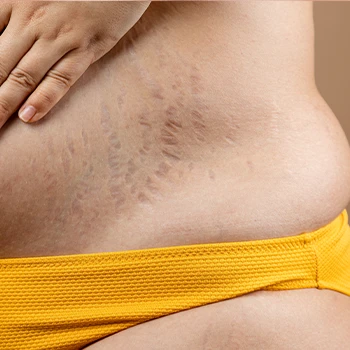
The best way to prevent stretch marks is to start treatment before or during weight gain.
If you notice you're starting to gain weight, you should start taking preventative measures.
You should drink water to stay hydrated. One of my clients noticed a remarkable improvement in her skin's elasticity after increasing her water intake and regularly applying hydrating creams.
Be aware that, for the most part, stretch marks aren’t preventable. They are very common and are a part of bodily changes that most people experience.
“A stretch mark is a type of scar that develops when our skin stretches or shrinks quickly. The abrupt change causes the collagen and elastin, which support our skin, to rupture. As the skin heals, stretch marks may appear.”
- American Academy of Dermatology Association
When they are fresh, stretch marks look red, pink, or even purple-blue, and the skin looks thin and elevated. But, over time, they thin and become pale.
Nutritional Approaches to Preventing Stretch Marks
Nutrition plays a crucial role in maintaining skin elasticity and strength, thereby potentially reducing the risk of developing stretch marks, especially during periods of rapid weight change.
Here's a closer look at how certain dietary choices can help in preventing these marks:
- Vitamin C: Foods rich in vitamin C, such as oranges, strawberries, bell peppers, and broccoli, can boost skin health and potentially reduce the risk of stretch marks.
- Vitamin E: Known for its skin-nourishing properties, vitamin E can help in maintaining skin elasticity. Almonds, sunflower seeds, and avocados are excellent sources of vitamin E.
- Zinc: This mineral plays a role in skin repair and can help in reducing inflammation. Zinc-rich foods include nuts, whole grains, and seafood.
- Omega-3 and omega-6: Are vital for maintaining healthy skin. Foods like flaxseeds, walnuts, salmon, and chia seeds are rich in omega-3 fatty acids, while most vegetable oils provide omega-6 fatty acids.
- Protein: Lean meats, poultry, fish, legumes, and dairy are good sources of high-quality protein.
- Antioxidants: Foods rich in antioxidants, such as berries, dark chocolate, pecans, and artichokes, can contribute to healthier skin and potentially reduce the likelihood of stretch marks.
Related Articles:
How to Treat Stretch Marks?
There are several ways in which you can treat existing stretch marks, including topical treatments, laser therapy, micro-needling, and other less-known methods.
Topical Treatments
According to a study in the Journal of the European Academy of Dermatology and Venereology, topical treatments, such as stretch mark creams and oils, may be effective in treating new and older stretch marks [1].
For example, tretinoin has shown results. It can stimulate collagen production and the creation of new cells.
You can also do a home treatment, such as cocoa butter and olive oil. These improve skin elasticity and hydration.
Or, you can buy creams for stretch marks.
These creams have lipids and peptides that stimulate collagen and promote skin regeneration and healing.
While you can’t expect to eliminate stretch marks with topical treatments completely, they are useful for improving the appearance of existing marks and preventing the formation of new stretch marks.
Laser Therapy
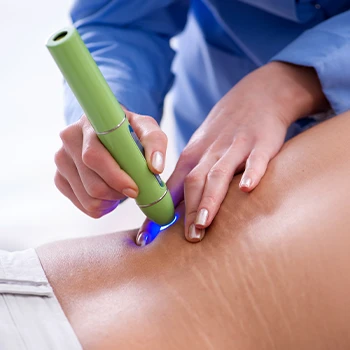
According to an article on the American Osteopathic College of Dermatology website, laser therapy can help with stretch mark removal, but it works best in the initial phase [2]. You should have this therapy while the stretch marks are still fresh and look red.
One of my former clients opted for laser therapy during the early stages of her stretch marks. Her commitment to this treatment resulted in a significant reduction in their visibility.
The most common laser therapy is Pulse Dye Laser (PDL).
This therapy is only done at dermatology clinics and is expensive. The laser targets the existing marks, reduces redness, and prevents their further progression.
You can expect laser treatment to make stretch marks look better and less visible.
This therapy isn’t as effective on older stretch marks, but it can increase collagen and make old marks blend in with the surrounding skin.
Microneedling
Microneedling is a more drastic approach compared to lasers. It’s very invasive and comes with certain risks because it works by damaging the skin.
A professional uses tiny needles to pierce the skin. This stops stretch mark formation and makes new skin cells replace existing ones.
Other Treatments
You have a better chance of stopping developing stretch marks than making old ones disappear completely.
But, you can improve skin health and reduce stretch marks by:
- Nutrition — Have a diet rich in Vitamin C and proteins from seafood, nuts, and lean meat. These help with healing stretch marks. Avoid sugar and processed foods as much as possible.
- Hydration — Dry skin is more likely to have stretch marks. You should drink about eight glasses of water a day to avoid dry skin and avoid coffee and soda.
- Exercise — Improves circulation and keeps skin elastic.
- Plastic surgery — The most drastic approach to stretch mark removal. A surgery removes skin on your body, which also removes stretch marks.
FAQs
Can Vaseline Remove Stretch Marks?
No, Vaseline can’t remove stretch marks, but it can moisturize the skin and help its appearance.
Are Stretch Marks Permanent?
Yes, stretch marks are permanent, but treatments can make them less visible.
Why Do Stretch Marks Itch When Losing Weight?
Stretch marks itch when losing weight because of the dermal tearing or healing, which in turn causes itchy and tingling sensations.
Do White Stretch Marks Mean Weight Loss?
No, white stretch marks don’t mean weight loss. White stretch marks mean that the tearings have been there for a while but have now matured. When they first appear, stretch marks are red or pink.
References:
- https://onlinelibrary.wiley.com/doi/10.1111/jdv.13223
- https://www.aocd.org/page/Striae
About The Author
You May Also Like



